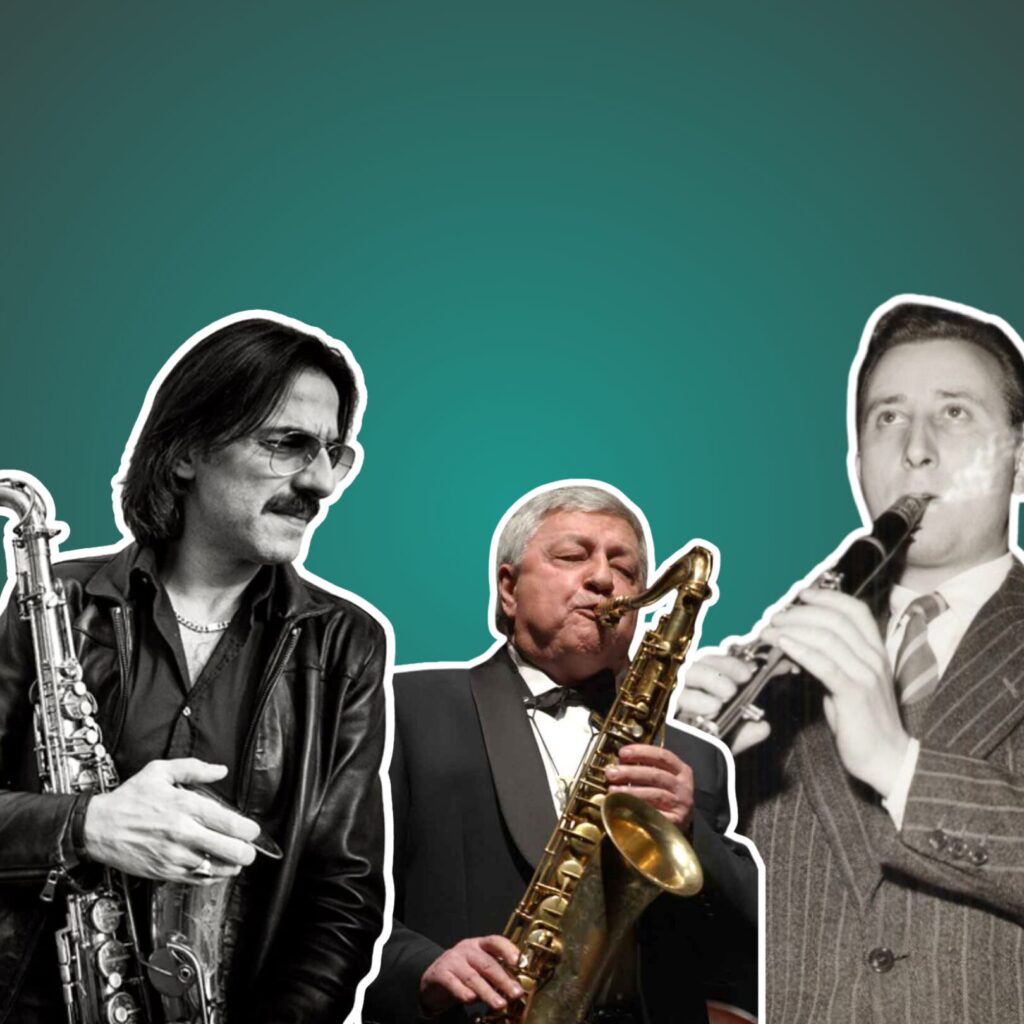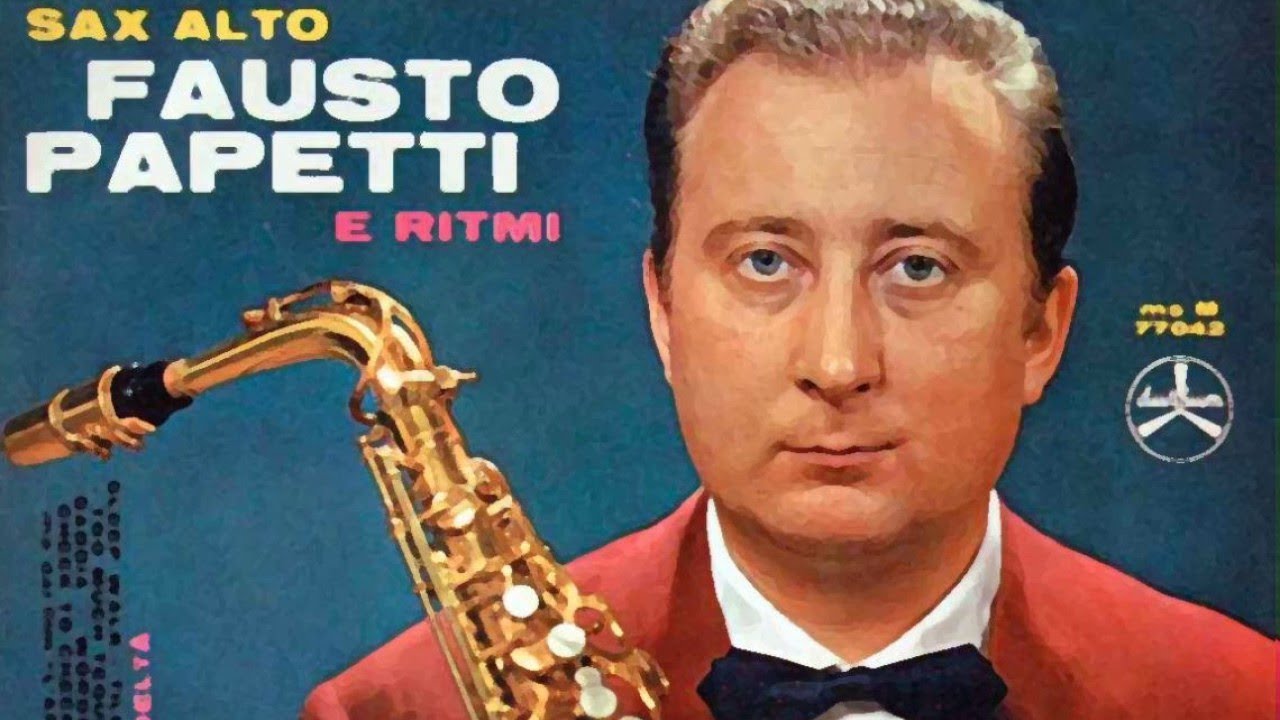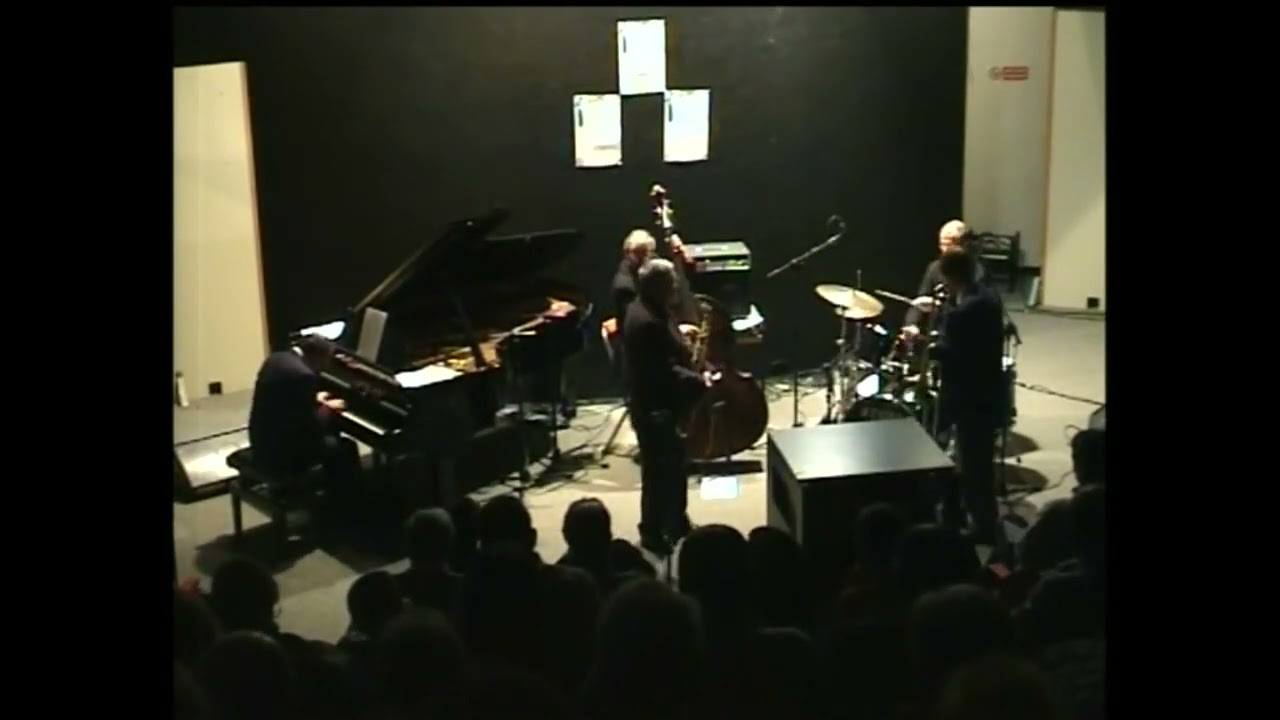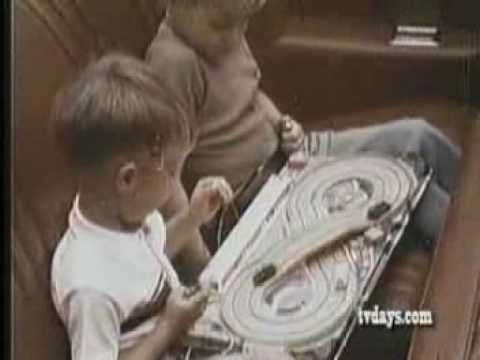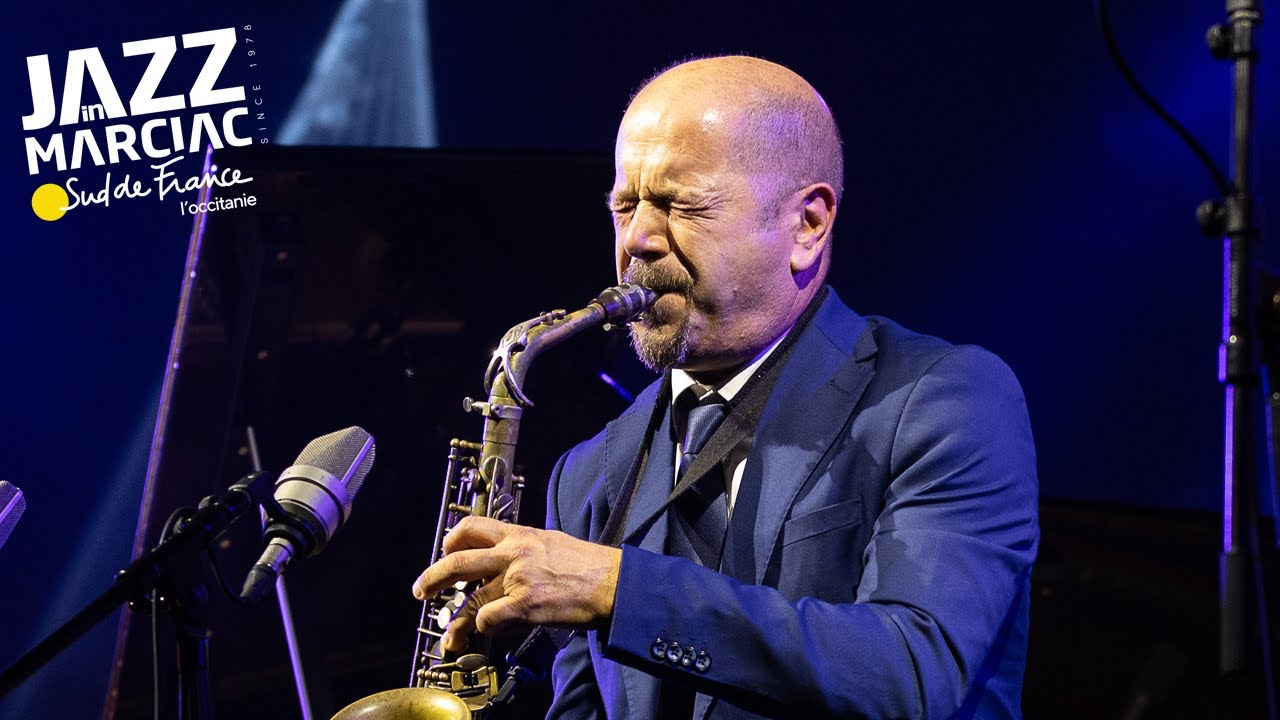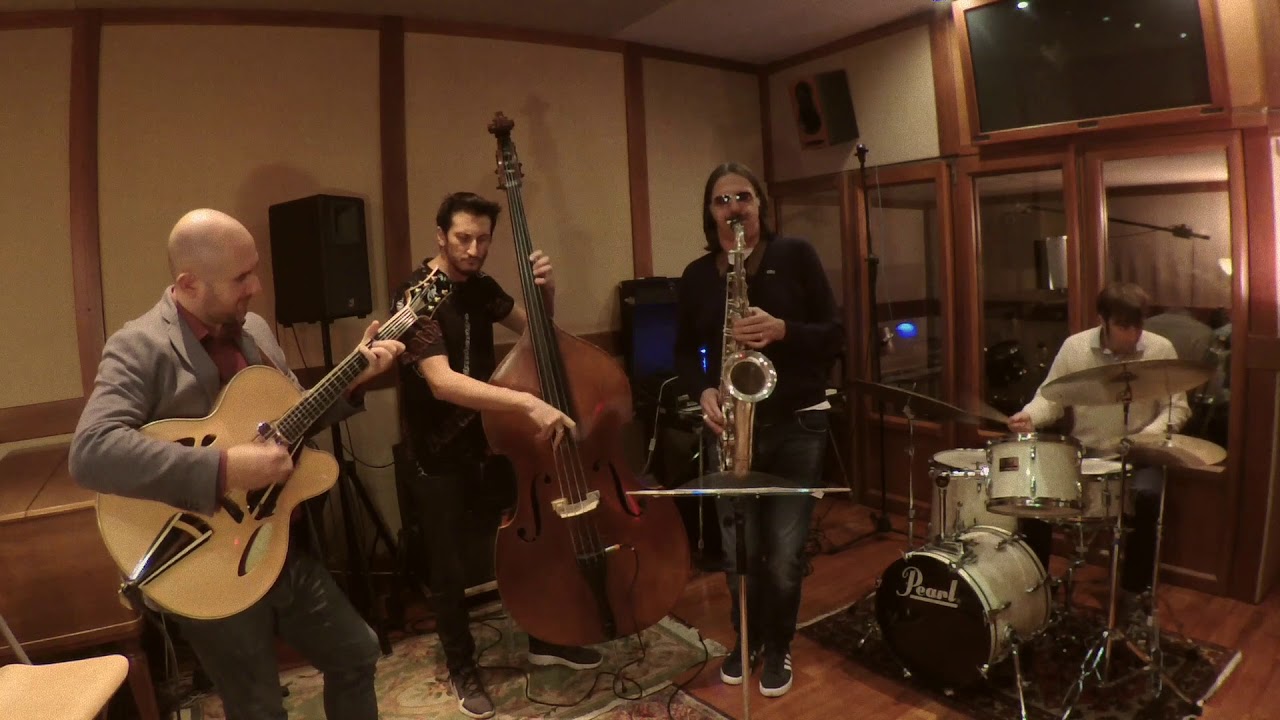Meet the sax players bringing Italy’s jazz scene to life! 🎷🎵
Italy’s relationship with the saxophone is a story of translation and re-invention: an instrument born in industrial 19th century France that found, in Italian hands, a voice at once lyrical, theatrical, and fiercely personal. The players below are some of the names that helped build that voice, qqnot because they all sounded the same, but precisely because each one turned technical command into a distinct expressive language. What follows are narrative portraits that dive into who they were, how they played, and why their work still matters for anyone interested in Italian saxophone, jazz in Italy, or the instrument’s broader cultural life. 🎶
Fausto Papetti
Papetti’s instrument of choice was the alto saxophone, which he transformed into a vehicle for melody and sentiment. Using primarily Selmer saxophones, known for their round and balanced tone, he crafted a sound that was warm, velvety, and breathy, with just enough vibrato to bring a human quality to each phrase. Rather than relying on complex jazz improvisation, he built his art around melodic clarity and emotional phrasing. Every note he played felt like it was sung rather than blown, an approach that became his signature.
His early fame came with the release of the “Raccolta” albums, a long-running series of collections that featured his saxophone renditions of well known songs. Titles like Raccolta n. 1 (1960) and Raccolta n. 2 quickly became bestsellers in Italy, Europe, and Latin America. These records transformed pop and film hits into lush, romantic instrumentals, often wrapped in dreamy orchestral arrangements. Among his most famous interpretations are “Love’s Theme”, “Feelings”, “Emmanuelle”, “Strangers in the Night”, and “Un Uomo e una Donna (A Man and a Woman)”.
One of his most beloved recordings, “Tema d’Amore”, captures everything that made Papetti special: a slow, expressive vibrato, a tone that seems to breathe, and phrasing so lyrical it feels alive. Another standout is his version of “The Shadow of Your Smile”, where his alto sax floats over a gentle rhythm section with the poise of a singer delivering a ballad. These performances illustrate how Papetti could take a familiar melody and make it deeply personal, turning pop culture into pure sentiment.
Behind the apparent simplicity of his music lay an extraordinary control of breath, embouchure, and tone production. His sound was intimate but never fragile, expressive but never forced. He preferred long, flowing lines over sharp articulations, and his gentle vibrato (slow and rounded) gave his playing a voice like warmth that few could match.
Papetti’s style was sometimes labeled “easy listening,” but it carried far more depth than that term suggests. He bridged the gap between jazz sophistication and mainstream accessibility, and in doing so, he helped bring the saxophone into the living rooms of millions. His music played in cafés, on radios, and in the background of romantic evenings, shaping how people around the world associated the saxophone with love and nostalgia.
Even decades after his passing in 1999, Fausto Papetti’s recordings continue to resonate. His saxophone remains a timeless voice; melancholic yet comforting, elegant yet simple. In the long history of Italian music, Papetti stands as a reminder that the saxophone is not only a jazz instrument but also a vessel for pure emotion. His sound, with its unmistakable Italian charm, still whispers softly across generations.
Gianni Basso
If Fausto Papetti was the voice of romance, Gianni Basso was the heartbeat of Italian jazz. Born in Asti in 1931, he’s often remembered as the true father of Italy’s jazz saxophone tradition, a musician whose sound carried both elegance and soul. His tone was smooth but strong, full of warmth and depth, and his phrasing showed the influence of American masters like Stan Getz and Zoot Sims, whom he deeply admired.
Basso started playing after World War II, performing in big bands before carving out his place in Italy’s growing jazz scene. His partnership with trumpeter Oscar Valdambrini became legendary, together, they created the Basso-Valdambrini Quintet, a group that perfectly blended the sophistication of cool jazz with the lyrical sensitivity so characteristic of Italian musicians.
When you listen to Basso’s tenor saxophone, what stands out is the balance: Full-bodied yet gentle, expressive but never exaggerated. He played with control and purpose, choosing clarity over showmanship and always letting melody lead the way. His albums, like Basso-Valdambrini Quintet (1959) and New Sound from Italy (1960), still stand as landmarks in European jazz, capturing that unmistakable mix of swing and subtlety.
But perhaps what made Basso truly special was his ability to connect worlds. He built bridges between Italian and American jazz, playing alongside legends such as Chet Baker, Buddy Collette, and Clark Terry, earning their respect for his lyrical, honest approach. His music wasn’t about speed or flash, it was about truth, phrased one note at a time.
Gianni Bedori: “Johnny Sax”
ew Italian saxophonists have left as deep and multifaceted a mark as Gianni Bedori, known to the wider public as Johnny Sax. Born in Mantua in 1930, Bedori was a musician of rare versatility, equally at home in the worlds of jazz, pop, and contemporary composition. Over his long career, he became a bridge between genres, showing how the saxophone could express both technical mastery and emotional depth.
Bedori’s formal training at the Conservatorio di Milano, where he studied clarinet and saxophone, laid the foundation for his exceptional control and tone. His early work in the 1960s with Giorgio Gaslini, one of Italy’s leading avant-garde composers, positioned him as a serious jazz artist. Albums such as Nuovi Sentimenti (1966) and Gaslini Plays Monk (1971) highlight Bedori’s expressive phrasing and fearless approach to improvisation. His tone (round, articulate, and full of character) reflects a deep understanding of both classical discipline and jazz freedom.🤘🏼
In the 1970s, Bedori reinvented himself under the name Johnny Sax, releasing a series of albums that blended jazz sensibility with popular appeal. Records like Johnny Sax (1971), Johnny Sax n.2 (1972), and Johnny Sax a modo mio (1973) became hugely successful in Italy and beyond. His renditions of themes such as “Love Story,” “Aria di Casa,” and “Emmanuelle” captured the imagination of listeners with their lyrical warmth and cinematic quality.
What made Bedori distinctive among Italian saxophonists was his ability to move effortlessly between artistic experimentation and mainstream success. While contemporaries like Fausto Papetti focused primarily on romantic easy-listening, Bedori kept his connection to jazz alive, often incorporating improvisational passages and harmonic richness into his popular works.
Technically, Bedori was a complete musician. He mastered several instruments: Tenor saxophone, clarinet, and flute, often layering them in his arrangements to create lush textures. His sound was notable for its precision and expressive nuance: clear yet resonant, lyrical yet controlled. Few players could move from an intimate ballad to an avant garde improvisation with such natural fluency.
Among his more ambitious projects, Dedicated to Picasso (1973) stands out as a testament to his creative depth. In this work, Bedori explored the intersection of jazz, modern composition, and visual art, revealing his broader vision as a composer and thinker. Throughout his career, Gianni Bedori contributed significantly to shaping the sound of Italian instrumental music in the 20th century. He not only elevated the saxophone’s role within jazz but also made it a central voice in Italy’s popular and artistic culture.
Stefano Di Battista: Modern Italian jazz innovator
Born in Rome in 1969, Stefano Di Battista represents a generation of Italian saxophonists who combine technical precision with expressive storytelling. He began playing the saxophone at thirteen, performing in local bands that shaped his early sense of ensemble playing and musical phrasing. Influences from Art Pepper and Cannonball Adderley, along with mentorship from the late alto saxophonist Massimo Urbani, helped him develop a voice that is melodic, flexible, and rooted in jazz tradition.
Di Battista’s early career was marked by his move to Paris in the early 1990s, where he joined the Orchestre National de Jazz and performed alongside notable European and American musicians. These experiences expanded his understanding of ensemble dynamics, improvisation, and tonal nuance, allowing him to merge Italian musical sensibilities with international jazz practices.
His recording career demonstrates both versatility and consistency. Albums like Volare (1997) and A Prima Vista (1998) introduced his lyrical approach, while his self-titled Blue Note release in 2000 and Round About Roma (2002) explored orchestral textures alongside his quartet. Projects such as Parker’s Mood (2004) pay homage to bebop traditions, while Morricone Stories (2021) interprets Italian film music with jazz phrasing, highlighting his ability to blend melody, improvisation, and cultural heritage.
Di Battista primarily plays alto and soprano saxophones, favoring a Selmer Mark VI alto with a Meyer 6M mouthpiece and a Yamaha 62R soprano with an Otto Link 6*. His tone is balanced, clear, and expressive, with precise articulation that allows his improvisations to remain lyrical without excessive embellishment. His playing reflects a careful balance between bebop influence, melodic sensibility, and personal interpretation, making his work approachable yet technically informed.
Within Italy, Di Battista is recognized as a central figure in modern jazz, while internationally, he is respected for both his recordings and live performances. His music provides a practical reference for saxophonists, demonstrating how to combine tone control, melodic phrasing, and ensemble interaction in a professional context. By bridging Italian musical heritage with contemporary jazz, Stefano Di Battista has established himself as a saxophonist whose work is both influential and instructive for players seeking a thoughtful, modern approach to the instrument.
Max Ionata, leading figure in contemporary Italian jazz saxophone.
Born in 1972, Max Ionata has emerged as one of the most prominent Italian saxophonists of the contemporary jazz scene. Within a relatively short time, he earned recognition for both his technical mastery and expressive phrasing, performing extensively across Italy and internationally. Ionata has contributed to over 70 recordings, working with a wide array of national and international artists, and has built a reputation particularly strong in Japan, where his music resonates deeply with jazz audiences.
Ionata leads several projects and maintains ongoing collaborations with some of the most respected musicians in jazz, including Robin Eubanks, Reuben Rogers, Clarence Penn, Lenny White, Billy Hart, Joe Locke, Anne Ducros, Steve Grossman, Mike Stern, Bob Mintzer, Bob Franceschini, Hiram Bullock, Joel Frahm, Miles Griffith, Anthony Pinciotti, Jon Cowherd, and John Benitez. Within Italy, he has worked with renowned artists such as Dino Piana, Roberto Gatto, Dado Moroni, Stefano Di Battista, Gegè Telesforo, Giovanni Tommaso, Flavio Boltro, Furio Di Castri, Fabrizio Bosso, Enrico Pierannunzi, Mario Biondi, Ornella Vanoni, Sergio Cammariere, and Renzo Arbore. These collaborations reflect his versatility and the high regard in which he is held by fellow musicians.
Ionata’s international presence is significant. He has performed at major jazz clubs and festivals in Japan, China, the Netherlands, England, France, Poland, Spain, Portugal, Serbia, Switzerland, Denmark, Germany, the United Arab Emirates, Kuwait, Peru, and the United States, consistently demonstrating the global appeal of his music. His performances combine melodic clarity, rhythmic precision, and emotional depth, providing audiences with a refined yet accessible jazz experience.
Primarily a tenor saxophonist, Max Ionata is distinguished by a full-bodied tone with a slightly rounded edge, allowing him to navigate both ballads and faster bebop lines with clarity. He emphasizes horizontal phrasing, often shaping long, singing lines that connect chord changes naturally, rather than relying on vertical, arpeggio-based improvisation. His control over dynamics is subtle but deliberate, using micro-dynamic shifts and breath-driven accents to highlight tension and release within a phrase. Harmonically, he balances bebop vocabulary with modal and contemporary language, often incorporating chromatic passing tones, delayed resolutions, and intervallic leaps to add color without losing melodic coherence.
¡Explora más contenidos!
- Los 5 mejores gadgets para saxofonistasSaxofón Electrónico VS Clásico Top 5 Easy Alto Saxophone Songs for
- Beginners! Saxofones electrónicos, ¡la guía definitiva!Los 5 mejores canales de Youtube para saxofonistasHow to
- play the saxophone without disturbing your neighbors? Instrumentos de viaje que todo músico debe conocer
¡Feliz lectura!
Equipo Odisei Music
